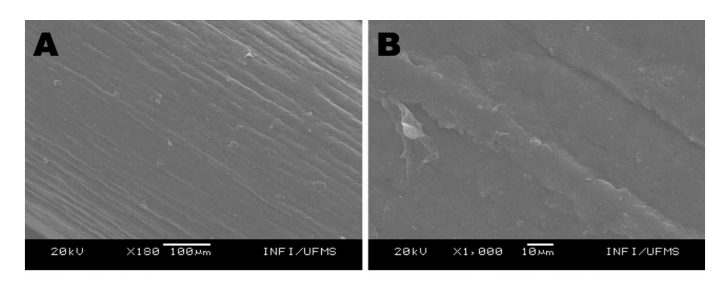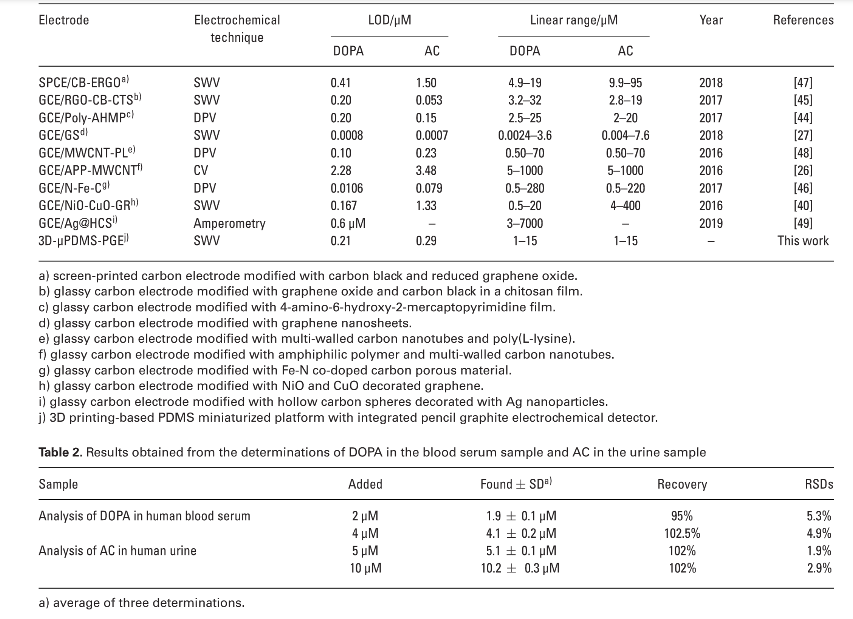Brazilian researchers from Instituto de Química explore miniaturized devices in the recently published ‘Design of novel, simple, and inexpensive 3D printing-based miniaturized electrochemical platform containing embedded disposable detector for analytical applications.’
 While there are many different methods used today for detection in miniaturized devices, electrochemical methods are attractive to users for the following reasons:
While there are many different methods used today for detection in miniaturized devices, electrochemical methods are attractive to users for the following reasons:
- Sensitivity
- Simplicity
- Ease in operation
- Potential for miniaturization of instrumentation
- Low environmental impact
- Minimal power requirements

Steps for the fabrication of the electro-chemical platform: (A) CAD design of the 3D printed mold used for prototyping the PDMS devices. The internal relief structures were20 mm length × 600 μmwidth × 1 mm height; (B)PDMS device obtained using the 3D printed mold;(C) PDMS miniaturized cell with the integrated working,pseudo-reference and counter electrodes; (D) geometric area of the electrodes delimited with adhesive tape, and (E)electrochemical platform
These techniques are applicable to other applications too, like electrochemical sensors:
“These aspects make the electrochemical techniques affordable, very attractive, and a powerful tool for analytical sciences,” stated the researchers.
Here, pencil graphite was chosen as it is a good alternative to carbon, accessible and affordable, and effective. For this project, the researchers presented a platform with a ‘fully integrated electrochemical detector, fabricated via FDM 3D printing.’
For the proof of concept, the device created here was used in analyzing both dopamine DOPA and acetaminophen (AC). This allowed the researchers to evaluate the functionality of the device, as they assessed parameters. Urine sample results were found to be ‘quite satisfactory,’ with the device functioning via a structure containing microchannels with the pencil graphite leads inserted into them, resulting in working electrodes.
“This way, the results reported here testify the good analytical efficiency, precision, and stability of the proposed device, and enables its use for routine analytical procedures and determination of electroactive substances in real samples, even using simple and inexpensive materials. Moreover, the 3D printing-based fabrication protocol used here may be an interesting alternative to the most widely used soft lithography on the fabrication of PDMS-based structures,” concluded the research team.
“It is interesting since the configuration of the devices is easily adjusted and the molds might be fabricated in-house without the use of complex instrumentation and expensive facilities such as clean rooms. Moreover, the device presented here might be used as a detector in other analytical systems such as flow and microfluidic devices. It opens promising new possibilities for application of the approach described here.”
3D printing and miniaturization often accompany each other today, and especially as researchers around the world seek greater opportunity to innovate and push the limits for versatility in a multitude of different applications, using a variety of hardware, software, and materials. As the lab-on-a-chip concept becomes increasingly more popular for scientists and industrial users, other vehicles such as microfluidics and micro-mixers are becoming widely used, along with so many other new methods and materials.
What do you think of this news? Let us know your thoughts! Join the discussion of this and other 3D printing topics at 3DPrintBoard.com.
[Source / Images: ‘Design of novel, simple, and inexpensive 3D printing-based miniaturized electrochemical platform containing embedded disposable detector for analytical applications’]
The post Brazil: 3D Printed Miniaturized Platform with Disposable Detector appeared first on 3DPrint.com | The Voice of 3D Printing / Additive Manufacturing.


